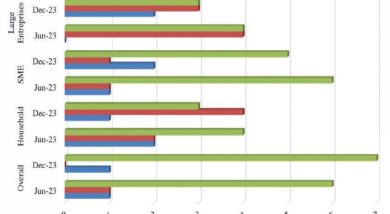Malawi’s banked population rises by 14%

The number of people accessing bank services in the country has jumped by 14 percent within five years. The financial inclusion figure is now at 54 percent from 45 percent in 2008, according to a 2014 consumer study by South Africa-based Finmark Trust.
The Finscope Survey is carried out by the Johannesburg-based Finmark Trust and through the Finscope Consumer Malawi Survey, it measured levels of financial inclusion, following a number of reforms in the financial sector in the last five years.
Among other findings, the study, however, revealed that the level of formal regulated borrowing from institutions such as banks has dropped slightly while the insurance sector is said to be growing, but at a snail’s pace.
The landscape of access, however, was driven by growth through savings which increased from 14 percent in 2008 to 17 percent in 2014 and with a further 1.2 million people [16 percent] now reported to be under village savings and loan associations.
“Growth has been driven by transaction products public employees that are paid through bank accounts, savings accounts with ATM cards, remittances and the innovative Makwacha PIN protected debit card,” reads part of the findings.
While welcoming the results of the study, Finance, Economic Planning and Development Minister Goodall Gondwe, who attended the official release of the findings in Lilongwe on Friday, said the development still calls for more action in ensuring financial inclusion.
“This is a welcome development, but we need to do more to ensure inclusive growth,” he said.
Gondwe said both government and private sector need to increase efforts in ensuring the remaining population is accessing bank services to ensure economic empowerment and inclusive growth.
On the drop on borrowing levels, the study noted this could be attributed to challenges with either the demand appetite or financial providers’ low appetite for risk taking.
“The study indicates that 49 percent of those who are not borrowing fear debts and 27 percent are scared that they would be unable to pay back the money borrowed,” stated the findings.
The study was aimed at identifying the systematic constraints that prevent financial markets from reaching out to customers and advocating for change.




